INDIAN OCEAN TRAVEL by TOURISMER
INDIAN OCEAN TRAVEL by TOURISMER

Responsible travel Tanzania
Tanzania is an East African country renowned for its vast wilderness areas. In particular the plains of Serengeti National Park, inhabited by the "Big Five" (elephant, lion, leopard, buffalo, rhino) and Kilimanjaro National Park, whose heart is Africa's highest mountain: 5,892 Mr. The country is crossed by the Great Rift Valley which runs through the western part of the country from north to south and in which some of the great African lakes are located.
Offshore are the tropical islands of Zanzibar, with Arab influences, and Mafia, with a marine park hosting whale sharks and coral reefs.
It is this richness of diversity that gives Tanzania a mystical allure of "homeland".
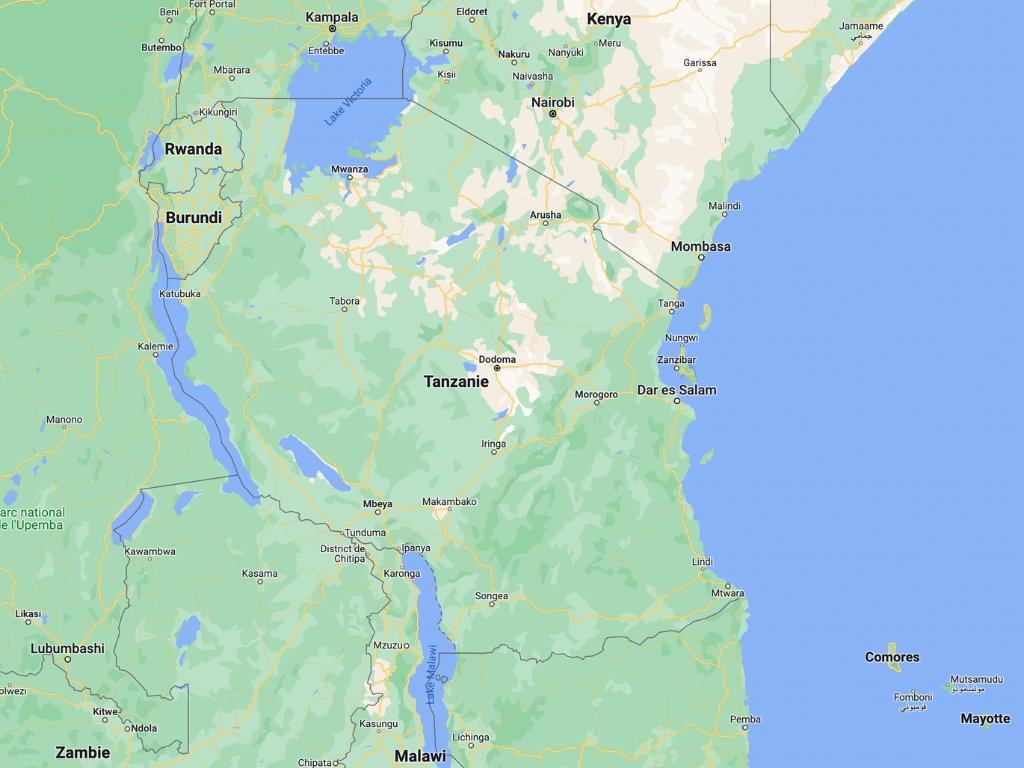
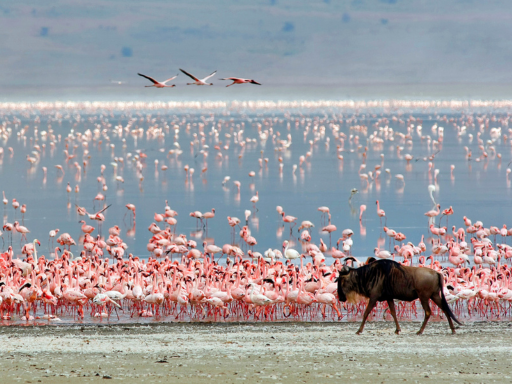
The wild lands of Tanzania, with their exceptional richness in fauna and flora, need protection and preservation. Our local experts practice responsible tourism on a daily basis and are very often involved in environmental projects through various local initiatives.

The Kilimandjaro is made up of three volcanoes: the Shira in the west, culminating at 3,962 meters above sea level, the Mawenzi in the east, rising to 5,149 meters above sea level, and the Kibo, the most recent geologically, located between the other two and Uhuru Peak at 5,891.8 meters is the highest point in Africa. Kilimanjaro is known for its summit ice cap in an accelerated retreat phase since the beginning of the XXe century and which should disappear completely by 2030 to 2050. The forest belt continues to tighten. The mountain is notably the cradle of the Maasai pastoralists in the north and west, who need high altitude grasslands to graze their herds, and the wachagga farmers in the south and east, who cultivate ever larger plots on the foothills, despite an awareness since the start of the XXIe century.

Serengeti National Park, is known for its large annual migration of wildebeest and zebra. In search of new pastures, the herds move north and away from the verdant southern plains, their breeding grounds. Most cross the crocodile-infested Grumeti River in the swampy Western Corridor region. Others go to the hills of Lobo, located to the northeast and populated by black eagles. Black rhinos occupy the granite outcrops of Moru Kopjes.
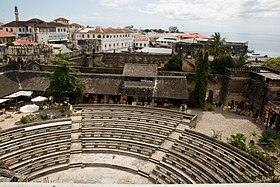
Stone Town (in Swahili: Mji Mkongwe), i.e. the "City of Stone", is the old quarter of Zanzibar, located on the island of Unguja, it is the historic quarter of the capital of Zanzibar, steeped in history, by a mixture of influences: British, Indian, Portuguese, Swahili and even Omani.
It is proof that cultures can mingle harmoniously, after a long and sometimes difficult road. The architecture is then magnificent and unique, with colorful, fragrant markets, crossing narrow streets where a mixed population will be delighted to welcome you.

The conservation area spans vast expanses of grassland, scrub and highland forest. It is a "multiple land use zone", where wildlife coexists with semi-nomadic Maasai pastoralists practicing cattle herding. It is home to the spectacular Ngorongoro Crater, the largest caldera in the world. The presence of globally threatened species, a high density of wildlife that lives there all year round, and the annual migration of wildebeest, zebra, Thomson's gazelle and Grant's gazelle and other ungulates to the northern plains, make it a unique place. Extensive archaeological excavations have yielded a long sequence of traces of human evolution dating back 3.6 million years!

Le parc est de petite taille, 325 km², et en saison humide plus des 2/3 sont recouverts par le lac Manyara. Les années les plus sèches, le lac peut s’assécher complètement. En raison de la présence du Rift, de la présence localisée de nombreuses sources permanentes et des variations d’altitude considérables en quelques kilomètres, la flore est particulièrement variée. L’extrême nord du parc est couvert d’une forêt tropicale dense, alors que plus au sud la forêt devient plus clairsemée et à proximité immédiate du lac disparait pour laisser la place à des prairies ou des marécages. La faune est particulièrement diverse et variée en raison de la grande diversité des biotopes. La forêt tropicale est le territoire des singes, dont la concentration est l’une des plus élevées au monde. Les babouins sont omniprésents, évoluant parfois en colonies de plusieurs centaines d’animaux. Les singes verts et singes bleus y sont également abondants. Le lac est un sanctuaire majeur pour les oiseaux. Le parc abrite plus de 400 espèces d’oiseaux différentes, dont d’imposantes colonies de flamants roses et de cigognes.

The Tarangire National Park owes its name to the Tarangire River which crosses it. It offers vast landscapes of rolling plains. Baobab trees abound in the northern part of the park. The landscape is mainly made up of wooded savannah, with many acacias, and becomes more marshy in the south. Also note the presence of many termite mounds, whether isolated or leaning against tree trunks.
The park is part of the immense ecosystem of the Maasai steppe. During the rainy season, the large herds of herbivores are spread over more than 20,000 km², but as soon as the rains stop, in June, they migrate to the last permanent water point in the region: the river Tarangire. Thus, at the end of winter (August-October), the park is home to a very high concentration of animals, especially elephants. Among the mammals: giraffes, Cape elands, Coke's hartebeest, impalas, dik diks, warthogs, wild dogs, greater kudus, and for predators: lions, leopards and cheetahs.

It is one of the largest protected areas in the world.
The reserve owes its name to a hunter, Captain Frederick Courtney Selous, an English officer from the beginning of the XXe century. Heavily wooded, it is crossed by the Rufiji River and its tributaries which feed a large number of lakes, and leave behind many ponds during the dry season. You can also see hot springs and the Stieglers Gorge.
The fauna is extraordinarily rich, in number of species as well as in number of individuals. The park is home to nearly 800,000 large mammals, a record number, which includes the world's largest concentration of elephants (50,000), buffaloes (110,000), wild dogs (1,300), more than 3,000 or 4 000 lions. There are also zebras, wildebeest, a hundred specimens of the protected species of Black Rhinoceros, as well as huge numbers of hippos and crocodiles. Many predators such as leopards and cheetahs also live there, alongside a vast community of baboons, various species of antelopes and giraffes. 440 kinds of birds have been identified, including the bateleur eagle or rare hornbills.

The Arusha National Park covers Mount Meru, a volcano culminating at 4566 meters in the Arusha region, in the north of the country. The altitude of the park goes from 1500 meters up to Mount Meru.
Among other species, the park is home to elephants, Maasai giraffes, buffaloes, zebras, warthogs, guereza colobus, diademed monkeys, flamingos. There are no lions there.
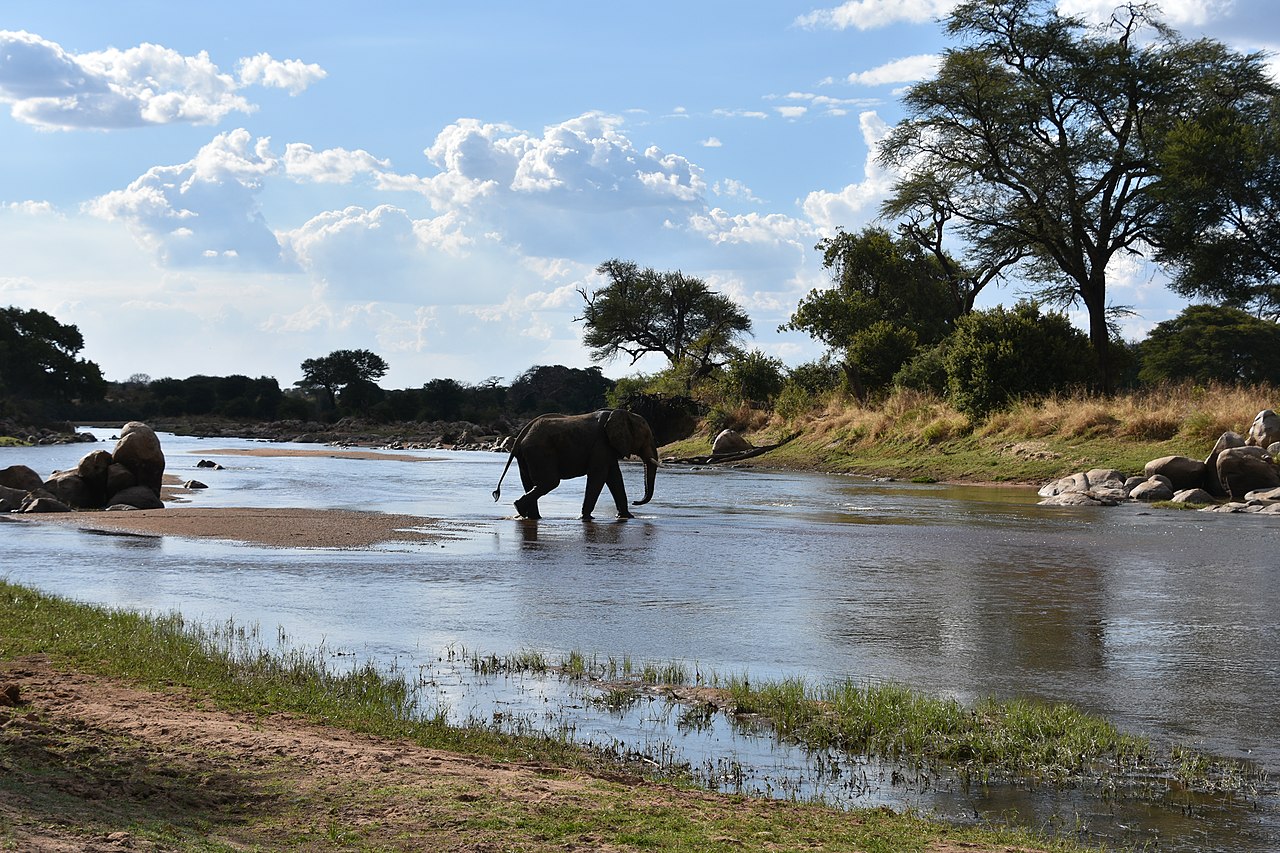
It is the second largest in the country, behind the Serengeti. The park protects a large semi-arid area of the central Tanzanian plateau, about a hundred kilometers west of the town of Iringa. The relief is generally not marked, the park culminating at an altitude of 1,859 meters. The park is renowned for its herds of elephants, the largest in East Africa. Between 10 and 12,000 of them congregate in the Ruaha Valley during the dry season. There is also a wide variety of antelopes in the park, including black antelopes, defassa waterbucks, impalas and even greater kudus. Among carnivores, hyenas, leopards and cheetahs are relatively common, while small populations of lions, wild dogs and jackals remain. Many crocodiles and hippos live by the river.
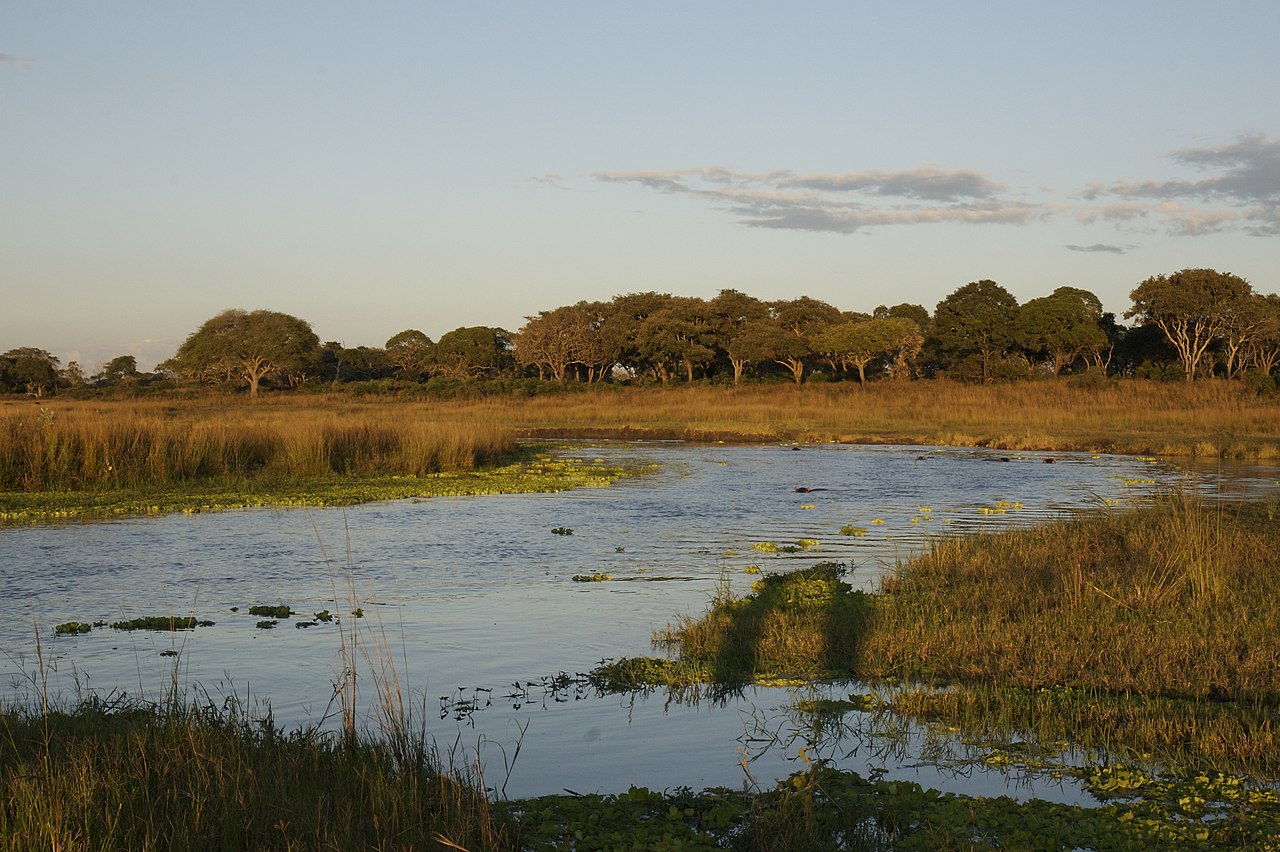
The park is located not far from Lake Tanganyika, but at a great distance from the main cities and tourist centers of the country. It remains very isolated and devoid of infrastructure with the exception of the Kigoma-Mpanda-Sumbawanga track which crosses the eastern border of the park. Although being the 3e national park of the country by size, it remains very little visited, only a few hundred tourists a year, because of its great isolation.
The marshes are home to the highest population density of hippos and crocodiles in the country.
In the wet season, the park is renowned for its birds, and more than 400 species can be observed there. In the dry season (May to October), and due to the persistence of water points, large herds of mammals gather at their turn in the park. There are then up to 4,000 elephants, thousands of buffaloes and zebras, and several species of antelopes.

The Gombe Stream National Park (or torrent de Gombe) is located on the Tanzanian side of Lake Tanganyika.
Gombe Park is world famous for its population of common chimpanzees, whose colony is one of the most studied on the planet. In 1960, Jane Goodall moved to this remote region of Tanzania and began to study great apes. His work led to many discoveries concerning chimpanzees, including the chimpanzee war in Gombe between 1974 and 1978, and the scientific impact of his discoveries is considerable. Today, the park still houses a research center that continuously monitors great ape populations.
The Lake Victoria, with an area of 68,100 km2, is the largest lake in Africa and the third largest in the world. Lake Victoria is between the two branches of the Great Rift Valley. The lake has very indented shores forming many peninsulas, peninsulas, bays, capes and more 3 000 islands, most uninhabited. Lake Victoria is subject to a tropical climate with temperatures ranging between 16 °C also 27 °C.
There is a wide variety of birds: Lake Victoria is a place of passage for many migratory birds but it is also the living environment of a large number of resident species. Lake Victoria contains around 450 species of fish including 300 endemic belonging to the genus Haplochromis. The introduction of the Nile perch dangerously threatens the balance!
Lake Victoria represents the ideal destination for travelers wishing to get off the beaten track. The small water towns and natural expanses have kept their authenticity and the inhabitants have managed to preserve their ancestral way of life. Three ethnic groups share the shores of the lake: Hayas, Himas also Sukumas. Each has its own culture and traditions, to be discovered by visiting the small villages and staying with the locals.
More than 450 species of fish, molluscs, crustaceans, plants and minerals. The lake is also the refuge of a varied birdlife: kingfishers, seagulls, cormorants...
Lake Victoria supports millions of people: fishermen, sailors, farmers, industrialists... Unfortunately, its wealth is not unlimited and many reports point to the threats to the biodiversity of the lake.
The 2 official languages are kiswahili or Swahili (it would have appeared around the tenth century from the encounter between the Bantu peoples of the coast with the Arab and Persian merchants who criss-crossed the Indian Ocean), and English.
But there are other vehicular languages such as Arabic or Gujarati. The latter spoken by communities originating from the Indian subcontinent. The country has more than 120 ethnic groups, each of which has retained its own language.
Christianity is the largest religion in Tanzania. The country has 62,000,000 inhabitants in 2021 (diasporas not included) and has significant Muslim and animist minorities.
Animism is the belief in a spirit, a vital force, which animates living beings, objects but also natural elements, such as stones or the wind, as well as in protective spirits. These mystical spirits, manifestations of the deceased or of animal deities, can act on the tangible world, beneficially or not.
A 2010 Pew Research Center survey found that 60% of the population is Christian, 36% is Muslim, 2% practices traditional religions, and 1% is unaffiliated with any of the three denominations..
Tanzania is largely influenced by the Swahili culture of Zanzibar. More generally, the whole country retains traces of the Arab presence, which spread along the caravan routes between the coast and the current Great Lakes countries from the end of the 19th century. This influence can be seen in different cultural aspects, such as architecture, clothing.
Painting
The Tingatinga is a school of contemporary Tanzanian painting that developed in the second half of the XX century. It then spread to most East African countries. Tingatinga is one of the most widely represented forms of tourist paintings in Tanzania, Kenya and neighboring countries.

Music and dance
The traditional music composed by the different ethnic groups is linked to specific functions expressing the different cycles of life through voice and musical instruments.
Wagogo music
The driving energy and rhythmically exuberant accompaniment of the mkwajungoma xylophone, "sanza", izeze violin, ng'oma percussion, ipangwa zither, mlanzi flute for these entertaining Wagogo pieces, from the great vocal repertoire.
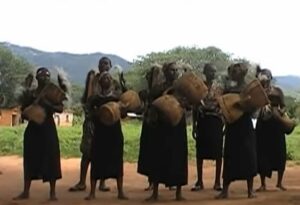
Masai dance
There are different Maasai dances. One of the best known is a form of competition between men, who must jump as high as possible while keeping their feet together.

The most popular dish isUgali, a kind of polenta made from corn, millet or cassava flour.The pilau is a spicy rice that can be accompanied by meat or the many fish eaten especially on the coast and in the region of the great lakes.
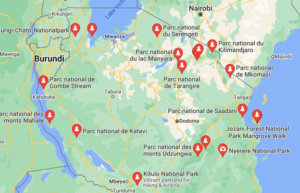
Thanks to the absence of fences between the parks and reserves of Tanzania, you will be in complete immersion with the important populations of wild animals of Africa which you will be able to observe in their natural environment.
Here are some of the most beautiful:
Here are some legendary treks:
The map of the three main lines of the country, to continue the journey, the complete report:
"A Rustic Journey on a Train in Tanzania"
See more : https://www.tf1info.fr/voyages/video-voyage-rustique-a-bord-d-un-train-en-tanzanie-2196111.html
Find more updated information on Tourism in Tanzania in our Blog Tourismer.io
Plan International has been present in Tanzania since 1991. The NGO works with communities, government and partners to support children, young people and their families in defending their rights, including the right to health and education or protection.